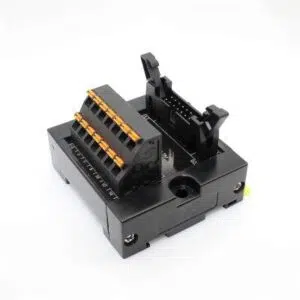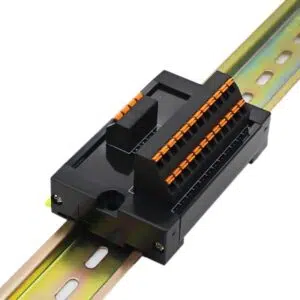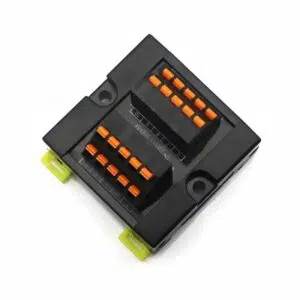In the complex world of industrial automation, where every second counts, a factory’s nervous system relies on the seamless communication between its central brain—the PLC—and the countless devices in the field. Imagine a scenario where a Programmable Logic Controller (PLC) needs to communicate with sensors running on different voltage levels or protocols.
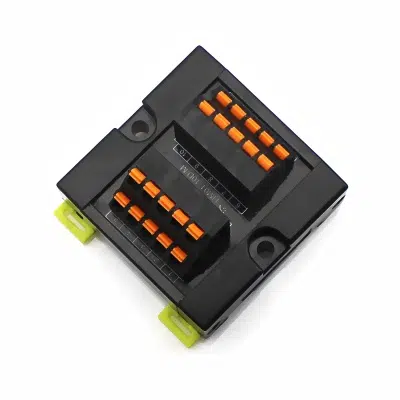
In this situation, PLC interface module acts as invisible translators, ensuring a harmonious and uninterrupted flow of data. Simply put, a PLC Interface Unit is a crucial piece of hardware that bridges the gap between the PLC controller and various field devices like sensors and actuators. It’s the silent enabler that solves signal mismatch problems and ensures every component speaks the same language, making efficient automation a reality.
Part 1 How PLC Interface Modules Work: 3 Essential Functions
Signal Conversion
PLC Interface Unit translates different types of signals. They convert analog signals, like a 4-20mA current loop from a sensor, into the digital signals a PLC understands. This is crucial for interpreting real-world measurements.
They also handle protocol conversion, allowing devices using older standards like Modbus RTU or Profibus to seamlessly integrate into modern systems with protocols like TCP or Profinet. This ensures all components can communicate effectively, regardless of their native language.
Electrical Isolation
These modules protect sensitive PLC components by providing a safety barrier using optical or magnetic isolation. This prevents high-voltage surges and electrical noise—like the interference from a large motor starting up—from damaging the PLC. With isolation ratings often from 1500V to 3000V, these modules are a vital defense against electrical faults, preventing costly downtime and ensuring system reliability.
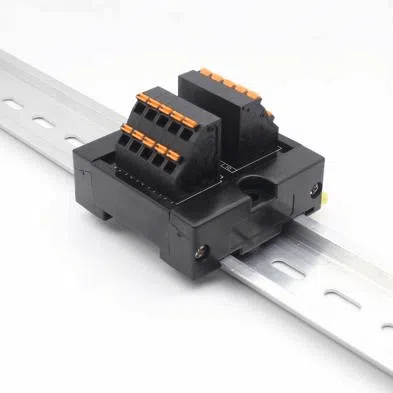
Model Number: HM01-10M
- Plastic material: PA66 UL94V-0
- Size(L*W*Hmm): 55*55*42mm
- Certification: UL,CE,ROSH,CQC,TUV
- Wire range: Can be 24-12AWG
- Max soldering: -40℃~±105℃/5Sec
Signal Amplification & Conditioning
Interface modules strengthen weak signals, such as the millivolt output from a thermocouple, so the PLC can read them accurately. They also perform signal conditioning to improve quality. This includes filtering out electrical noise (EMC/EMI) to prevent false readings. By providing a clean, stable signal, these modules ensure more precise and predictable automation.
Part 2 Deep Dive to Types of PLC Interface Units
PLC Expansion Interface Module come in various forms, each designed to tackle a specific challenge in industrial automation. Understanding the different types is key to selecting the right one for your application, whether you need to convert a signal, isolate a circuit, or bridge a communication protocol. The table below outlines the most common types and their primary functions.
| Type | Function | Best For |
| Signal Conversion | Converts analog signals (e.g., 4-20mA) to digital and vice versa. | Integrating various sensors and actuators with different signal types. |
| Relay Modules | Provides electrical isolation and switches higher-power loads. | Protecting PLC outputs from surges and controlling motors or solenoids. |
| Protocol Converters | Translates between different communication standards (e.g., Modbus to Profinet). | Connecting devices from different manufacturers on a single network. |
| Specialized Modules | Handles unique signals like those from thermocouples or strain gauges. | High-precision data acquisition in specific applications. |
In conclusion, choosing the right interface module is vital for a robust and efficient automation system. For seamless integration and space-saving design, consider our HM01-24M. Its DIN rail mountable form factor and versatile functionality make it a comprehensive solution for your industrial automation needs.
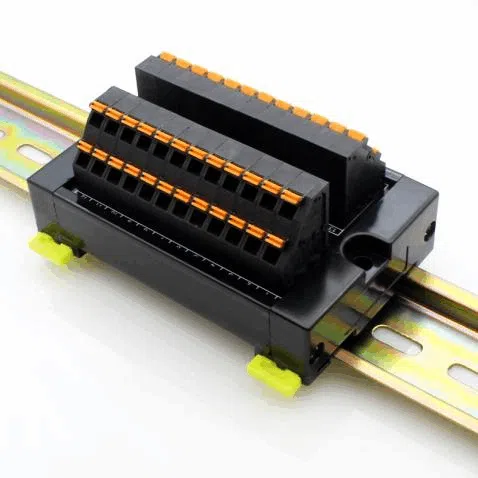
Model Number: HM01-24M
- Plastic material: PA66 UL94V-0
- Size(L*W*Hmm): 75*55*42mm
- Certification: UL,CE,ROSH,CQC,TUV
- Wire range: Can be 24-12AWG
- Max soldering: -40℃~±105℃/5Sec
Part 3 How to Choose the Right PLC Interface Modules
Selecting the correct DIN Rail-Compatible Interface Module is crucial for the reliability and efficiency of your automation system. A mismatch can lead to communication errors, equipment damage, or system downtime. By considering these five key factors, you can make an informed decision.
- Match Signal Types: First, clearly define your input and output needs. Ensure the module is compatible with the signals from your field devices. For instance, confirm whether you need NPN or PNP sensor compatibility.
- Check Protocol Compatibility: The module must support the same communication protocols as your PLC. A Siemens S7-1200 PLC, for example, will require a Profinet-compatible module for seamless integration.
- Isolation Requirements: For environments with significant electrical noise or high-voltage risks, choose a module with a high isolation voltage, typically ≥ 2500V, to protect the PLC.
- Environmental Ratings: Consider the operating environment. A module’s IP rating (e.g., IP67) is essential for wet or dusty conditions, while a wide operating temperature range is vital for extreme climates. For high-speed applications, our HM01-50M is an excellent choice.
- Certifications & Compliance: Finally, verify that the module has necessary certifications like UL, CE, or ATEX to ensure it meets safety and quality standards for your specific industry.
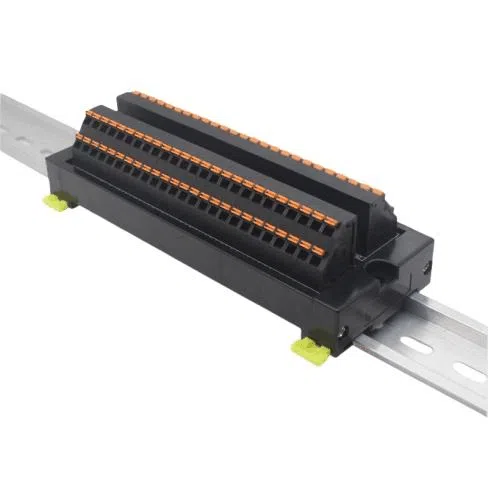
Model Number: HM01-50M
- Plastic material: PA66 UL94V-0
- Size(L*W*Hmm): 150*55*42mm
- Certification: UL,CE,ROSH,CQC,TUV
- Wire range: Can be 24-12AWG
- Max soldering: -40℃~±105℃/5Sec
FAQ: All You Need to Know About the PLC Interface Unit
Q1: What is a PLC interface module?
A1: A PLC interface module is a hardware component that connects a PLC controller to various field devices like sensors and actuators. It acts as a translator, solving signal mismatch problems and ensuring seamless data flow between different components.
Q2: What are the main functions of a PLC interface module?
A2: Its key functions include signal conversion (e.g., analog to digital), electrical isolation to protect the PLC from surges, and signal conditioning to filter out noise and amplify weak signals for accurate readings.
Q3: How does a PLC interface module protect my PLC?
A3: It uses electrical isolation technology, such as optical or magnetic isolation, to create a protective barrier. This prevents high-voltage spikes and electrical noise from damaging the sensitive electronics within the PLC.
Q4: Can one module work with any PLC?
A4: No. You must choose a module that is compatible with your PLC’s specific communication protocols (e.g., Profinet, Modbus) and signal types (e.g., NPN/PNP). The module and PLC must be able to “speak the same language.”
Q5: What factors should I consider when choosing a module?
A5: You should consider five critical factors: matching signal types, checking protocol compatibility, assessing electrical isolation needs, evaluating environmental ratings, and verifying necessary certifications like UL or CE.}
Conclusion
Ultimately, the PLC interface module is more than just a piece of hardware; it’s the critical link that ensures the reliability and efficiency of your entire automation system. By understanding its key functions—from signal conversion and electrical isolation to signal conditioning—you can make an informed decision that protects your investment and optimizes performance.
Choosing the right module is a fundamental step toward building a robust and dependable industrial network. If you’re ready to upgrade your system or need expert guidance to select the perfect product for your specific application, our team is here to help. Connect with our specialists and find your ideal solution.

